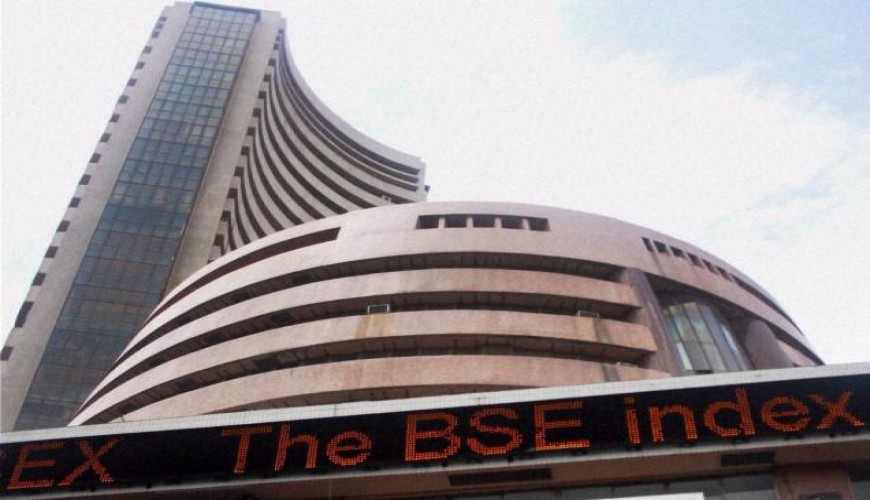This approach can help in reducing stock market movements and losses on the bourses
Ever wondered why stock markets have huge upswings or downswings? Most of the times, they are like a domino effect, a chain reaction, caused by herd behaviour. Herding is an inclination of investors to follow the crowd, thus destabilising stock prices. It is a very powerful bias, and in the process of mimicking each other, the impact on the stock prices gets intensified, leading to bubbles when the demand is high and crashes when investors detect overpricing.
This is contrary to the classical finance theory, which believes that investment decisions are taken by rational investors. But are investors really rational? A Boston-based research group reported in 2007 that an average stockholder earned 4.3 per cent per annum returns where the returns of American S&P 500 Index averaged at 11.8 per cent per annum. The reason for this variance was the irrationality of investors of buying high and selling low.
A peek into the past can show that players in the stock market have been irrational since the time the bourses have existed. One of the earliest instances of unreasonable herd behaviour is the Dutch tulip bubble of the 1630s, also known as “Tulip Mania.” When the tulip was introduced as a new variety of flower in the Netherlands, the Dutch people, because of some strange reason, became excited about this new exotic flower and vied to invest in tulip bulbs.
Progressively, the investments grew huge and at the pinnacle of this mania, a single bulb was sold at a price that was more than ten times the annual income of a skilled worker. But when people realised that investments in tulip bulbs were way more than their actual worth, they panicked and started selling tulip stocks, leading to a sharp fall in the stocks, resulting in huge losses.
This and many other subsequent events after this, like the dot.com bubble and the more recent real estate bubble, have led to the belief that investors do not behave rationally and that their decisions are mostly driven by emotions like panic, fear and greed. These instances are in contradiction of the traditional financial theories that are based on efficient market hypothesis, that assume that all the information is reflected in the stock prices efficiently and in a timely manner. So much so that the investors are unable to make any abnormal profits by buying stocks. There are four pillars of traditional finance: Rational investors; efficient markets; traditional portfolio designs; and linear expected returns-risk relationship.
However, stock markets in reality are largely inefficient, which is evident due to various market anomalies, speculative bubbles and over or muted reaction to any new information about stocks. These prevalent conditions in the stock markets suggest that investors are more emotional than rational about their investment decisions, leading to creation of bubbles.
A bubble is created when the stock price is driven higher than its fair value as people invest in these stocks, neglecting the fundamental valuation. Such investments strengthen the overpricing even more and put pressure on the stock prices to generate higher returns for investors, failing which, the selling starts and picks up momentum when investors follow one another, leading to the bursting of the bubble. Behavioural finance, as a discipline, emerged as an attempt to explain the psychology of financial decision-making and how the human angle affects the same. Several researchers believe that principles and morals of people influence their economic, social and financial decision-making. Sentiments like pride, shame, insecurity and egoism also play an important role in investment decisions. By accepting the fact that investors are irrational and have biased decision-making, behavioural finance entends the limitations of traditional finance theories into possible inefficiencies in the financial markets and provides a realistic view.
Research has identified two types of behavioural biases. The first one, a heuristic-driven bias, also known as cognitive bias, acknowledges that investors are investigative in nature and use rules of thumb to process data for decision-making. For example, people predict future performance of stock market movements through historical data. Emotions like overconfidence, anchoring and adjustment, reinforcement learning, excessive optimism and pessimism form a part of this bias. The second one, frame-dependent bias, is where the investors’ decision-making process is affected by the way they frame their options, like narrow framing, mental accounting and the disposition effect.
It can be concluded that awareness about behavioural biases is indispensable since it is unequivocally associated with human beings and its implications are far and wide. Ignoring such behaviour of the decision-making process can prove to be quite expensive in the financial markets as it can result in stock market anomalies. Financial investment managers and advisors can identify investment mistakes if they have a good understanding of this behaviour of retail investors and become more effective by understanding their clients’ psychology and needs. It helps them in creating a behaviorally-adjusted portfolio, which best suits their clients’ requirements. Investment bankers can put this knowledge to use by correctly timing the IPOs and understanding the general sentiment in the stock markets. Behavioural finance also helps financial analysts in forecasting future stock market movements and recommending appropriate stocks for investments. Finally, individual retail investors can use this expertise to make wise, rational and effective financial decisions.
Investors, financial advisors and fund managers are all humans and are subject to biases. Understanding the psychology of financial decision- making can help in reducing the stock market movements and reducing losses on the bourses.
(The writer is Associate Professor, Amity University, Noida)








 OpinionExpress.In
OpinionExpress.In















Comments (0)